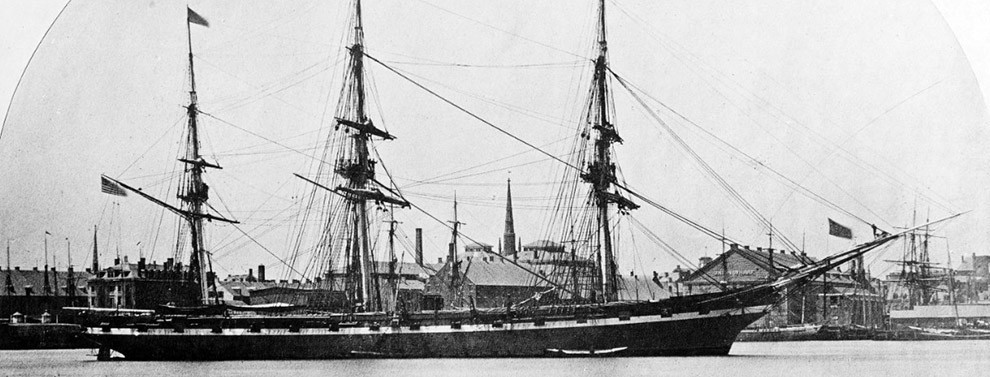The Farragut Museum, located inside Farragut Town Hall, is home to one of the largest collections of Admiral David Farragut memorabilia in the country. The collection includes information on the USS Hartford that he commanded during the Battle of Mobile Bay in 1864.
One artifact of considerable interest is the steam whistle that is purported to have been removed from the Hartford. The circumspect route of how it happened to be on display there has long been a mystery, and the topic of many a discussion among Farragut High School graduates.
The USS Hartford was launched in 1858, commissioned in 1859, and served gallantly including the Battle of Mobile Bay in 1864 until it was decommissioned in 1926 at Charleston, South Carolina. In 1938, at the request of President Franklin Roosevelt, it was moved to Washington, D.C., to be placed on display at a new naval museum. When Roosevelt died, plans to save the ship and construct the museum were abandoned, and in 1945 the vessel was towed to the Norfolk Navy Yard awaiting restoration. Unfortunately, neglect allowed it to sink. After being refloated, it was dismantled in 1956, and in 1957 the remains were disposed other than a few relics.
A detailed list maintained by the Navy Museum lists locations where these various relics are on display. Among those items are the anchor, wheel and fife, and cannons; however, there is no listing in the inventory of the fate of the two steam whistles.
In examination of the artifact, one cannot find any serial or identification number on the whistles, and the current museum records give no information on how they acquired it except to say that it is dated 1955.

The steam whistles in the 1962 Farragut High School yearbook.
A reliable piece of evidence is an account in the Knoxville Sentinel in 1958, reporting that the whistles were presented to the school with plans for placing them on display. The last known picture of them was in the Farragut High School 1962 Yearbook.
The story of how the Museum inherited them has remained a mystery and shrouded in community lore which is further impeded by the passing years affecting the memories of those Farragut alums and teachers that remain with us. Classmates of 1964 tell the story that Earl Garren Smith found the whistles in a pawn shop and persuaded his class to sell candy for the purpose of purchasing them. Some say the class was successful in obtaining the whistles, and that the following class of 1965 raised additional money to have it mounted on the original school site at the corner of Concord Road and Kingston Pike.
Yet another story related that the whistles were part of the Farragut Cannery. An interview with Margaret Bacon, a frequent patron at the cannery says that she does not remember steam whistles being used there. The cannery was built by Knox County in 1941 and was razed in 1963.
The subject of the whistles brings forth numerous questions: if they were presented to the school as early as 1958 and not seen until 1962, where had they been in the meantime? How did they happen to be placed in a pawn shop? Were they ultimately moved to the current Farragut High School campus before being donated to the Farragut Museum?

The whistles on display in the Farragut Museum.
When one thought these questions might never be answered, Benna Kay Boring Hughes made an amazing discovery when she recently unearthed a letter dated December 18,1957, from Mr. S.B. Rudd, Department of the Navy, to her grandmother, Mrs. C.A. Boring, and Mrs. J.F. Eggers. Boring and Eggers had contacted U.S. Rep. Howard H. Baker Sr. to request that the school be appropriated items from the USS Hartford, and the letter stated that the “matter of souvenirs for the school is in capable hands and will be brought to a satisfactory conclusion.”
We are certain that the whistles haven’t been whistling Dixie, but we only wish they could talk. Nevertheless, we are glad that they are indeed now being stored and maintained in capable hands. What happened to them along the way to the Museum remains a mystery, but we are thankful to Hughes for adding some creditable relevance to the puzzle.
Mona Isbell Smith is a retired computer systems analyst who enjoys freelancing.

